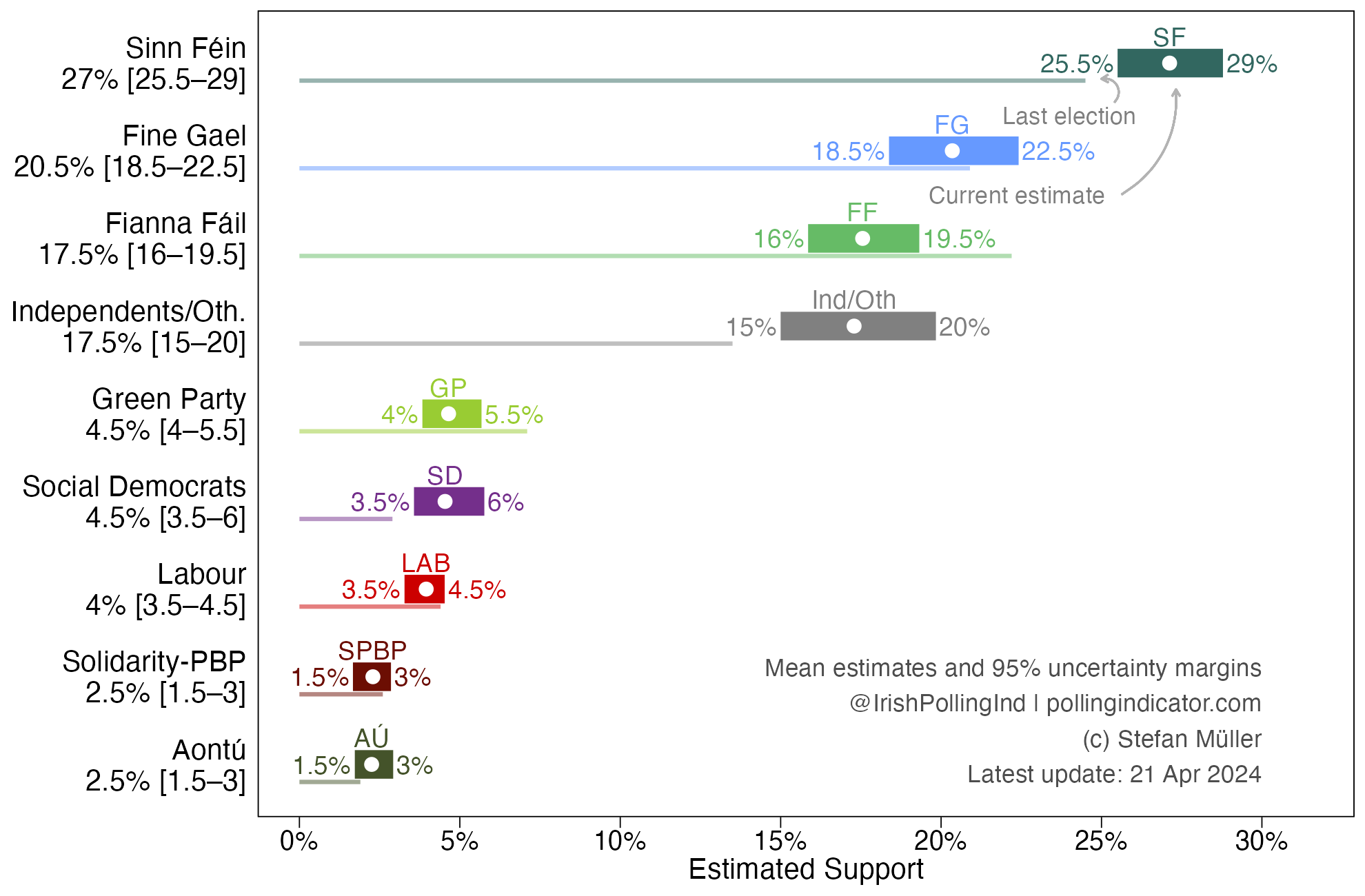Irish Polling Indicator
We provide full access to all available polling results (1982–2024) and daily aggregated estimates (1987–2024). We provide the daily estimates and raw polling results in four file formats. A detailed codebook describes both datasets and all variables.
Development Version (Latest Data Release)
First, we release our datasets as a development version which is updated after the release of every poll and stored in a GitHub repository.
If you use the development version of the data in your work, please consider citing:
Tom Louwerse and Stefan Müller. 2024. Irish Polling Indicator Datasets: Development Version. URL: https://github.com/Irish-Polling-Indicator/ipi-data.
Stable Version
Second, we provide a stable version of the daily estimates and raw polling results. New releases are published after an election cycle. The stable version has a unique identifier (DOI: 10.7910/DVN/BY5GXC).
If you use the stable version in your work, please consider citing:
Tom Louwerse and Stefan Müller. 2022. Irish Polling Indicator Datasets: Stable Version. Harvard Dataverse, V1. DOI: 10.7910/DVN/BY5GXC
Irish Demographic Polling Datasets
In addition to the Irish Polling Indicator data, the Irish Demographic Polling Datasets collect results on vote intentions, satisfaction with the government, and popularity of party leaders. The polling results are available for all respondents and various subsamples, such as age groups, gender, social class, geographic region, and district magnitude. The database merges over 100 polls, published between 2011 and 2024. The datasets can be accessed, visualised, and downloaded through an interactive dashboard.
- Government satisfaction (all respondents and subsamples): csv, Stata (dta), R (rds)
- Satisfaction with party leaders (all respondents and subsamples): csv, Stata (dta), R (rds)
- Vote intentions (all respondents and subsamples):
All datasets and variables are described in a detailed report and codebook (PDF). If you use the Irish Demographic Polling Datasets in your work, please consider citing:
Stefan Müller, Thomas Pluck, and Paula Montano. 2024. Irish Demographic Polling Datasets. URL: https://github.com/Irish-Dem-Polling/datasets




